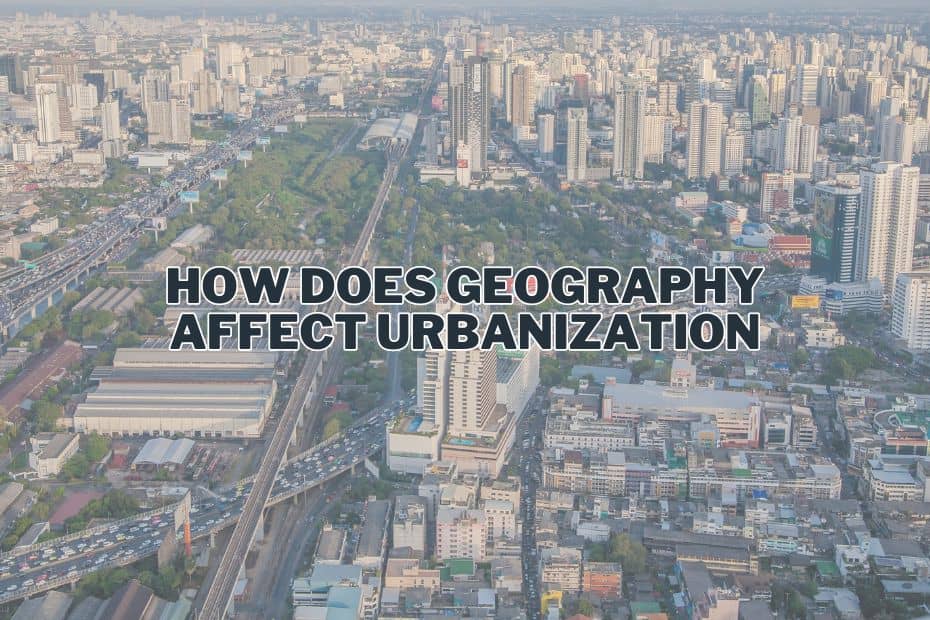
City locations are determined by a confluence of various factors that range from geographical conditions to economic considerations. Understanding these influences helps to clarify urban development patterns across different regions. Below are the primary factors that play a crucial role in determining where cities are established and how they evolve over time.
Geographical Factors
Natural Resources and Climate
Natural resources, climate, and topography are fundamental to urban development. Coastal areas, for example, often emerge as significant trade hubs due to their proximity to bodies of water, which facilitates shipping and industry. In contrast, inland regions typically support more rural lifestyles reliant on agriculture, owing to limited access and trade opportunities compared to coastal cities[1]. The availability of natural resources also shapes a city’s economic activities, with areas rich in minerals fostering mining or agribusiness, depending on agricultural conditions[1].
Site and Situation

The physical characteristics of a location, referred to as site factors, play an important role. Elements like proximity to water sources, quality of soil, and elevation significantly influence city development. For example, cities located near rivers or coastal areas often thrive due to the economic activities that these features can support[4]. In turn, situation factors involve a city's geographical relationship with other areas. Strategic locations can enhance accessibility and connectivity, vital for trade and growth. New York City's location at the mouth of the Hudson River is a classic example, as this situational advantage spurred its extensive economic and demographic growth[3].
Economic Considerations
Connectivity and Trade
Cities frequently emerge in positions where multiple transportation networks intersect. This connectivity enhances a city’s role as a trade center, facilitating commerce and the movement of goods. Cities such as Chicago and Los Angeles are prime examples, having developed around these critical junctions of transportation routes[3]. Moreover, urban locations often correlate with economic activities; cities benefit from being centrally located to market areas, allowing businesses to serve surrounding populations effectively[2].
Resource Distribution
The distribution of resources includes not only natural resources but also labor and capital. Economic structures in cities are largely influenced by local resource availability, which, when combined with favorable climates, leads to specific industries taking root. For instance, cities began to form based on industrial needs for raw materials and energy resources during and after the industrial revolution[2][5]. Moreover, agglomeration economies—the benefits that accrue to firms and individuals from locating near each other—further enhance the vibrancy of urban centers, promoting growth and specialization within areas[5].
Historical and Social Elements
Defense and Security
Historically, the need for defense influenced the choice of city locations. Many ancient cities were established in places that provided natural defensive advantages, such as elevated positions or being surrounded by water. As a result, places like Paris and Athens grew due to their defensible sites[3]. Security concerns also shaped city growth patterns, as well-protected areas attracted settlements and commerce, ultimately leading to their development into major urban centers.
Cultural and Religious Considerations
Cultural and religious factors have also played significant roles in city formation. Many cities, such as Mecca and Jerusalem, were established around religious centers, drawing followers and becoming pivotal urban locations due to their spiritual significance[3]. This attachment to cultural heritage continues to influence urban geography today, often leading to a concentration of population and economic activity around historically important sites.
Conclusion

The location and growth of cities are influenced by intricate interrelations among various factors, including geographical, economic, historical, and social considerations. Connectivity to transportation networks, resource availability, and market access are paramount in shaping urban areas. Furthermore, the natural physical environment and historical contingencies significantly influence the development of cities, underlining the complexity of urbanization processes across different regions. Collectively, these factors define not only the locations of cities but also their evolution over time, demonstrating the dynamic nature of urban geography.
Get more accurate answers with Super Pandi, upload files, personalized discovery feed, save searches and contribute to the PandiPedia.
Let's look at alternatives:
- Modify the query.
- Start a new thread.
- Remove sources (if manually added).